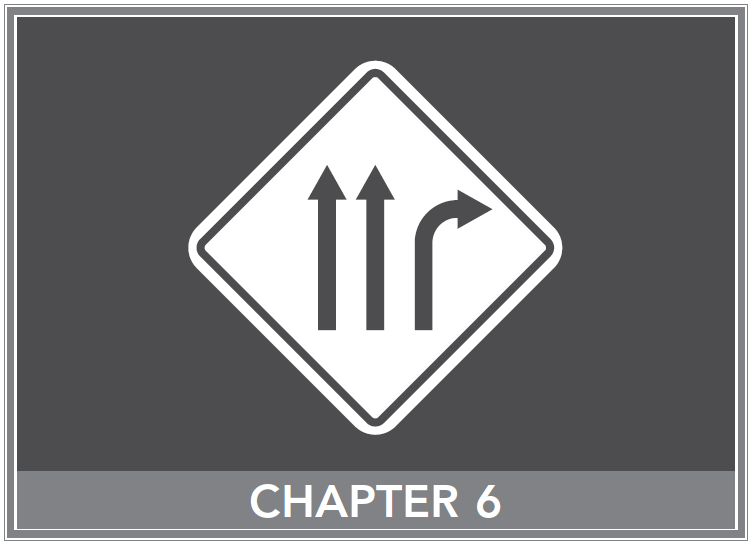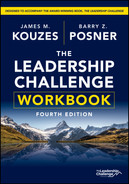
Challenge the Process
PEOPLE DO THEIR BEST when there's the chance to transform the way things are. Leaders seek and accept challenging opportunities to test their abilities, and they motivate others as well as themselves to exceed their self‐perceived limits. Understanding that change is the work of leaders. They don't sit back and wait for something to happen; instead, they are always inviting and creating new initiatives to make things better.
But most innovations do not come from leaders—they come from the people closest to the work. They also come from what we call “outsight.” Exemplary leaders venture out to find good ideas wherever they can. They seek diverse ideas and points of view, ask questions, listen, take advice, and learn.
Exemplary leaders move forward in small steps with little victories. They break tasks down and set short‐term goals. Knowing that trying new things involves taking risks, they create a safe climate in which people can experiment, make mistakes, and learn from their experiences.
To Challenge the Process, you search for opportunities by seizing the initiative and by looking outward for innovative ways to improve, and you experiment and take risks by constantly generating small wins and learning from experience.
Here are examples from personal‐best cases we've collected of how several leaders Challenge the Process:
- At the height of the COVID‐19 crisis, a nursing supervisor realized that the patients’ near‐total isolation meant that they and their families could not be together at a time when they needed one another the most. She asked her team to come up with options for offering visual and audio connections to their patients. The obvious options included the iPads typically used for patient education, laptops used for medical record charting, and even the nurses’ personal cell phones. Knowing that this was bigger than just her unit, however, she formally convened a task force, with her colleague from IT as their partner. Committed to finding a solution, the task force quickly created a virtual visitation and communication policy for all patients that included livestreaming, centralized device distribution, patient and family communication expectations, and a communication champion for each clinical unit. The usually slow pace of change and innovation typical of this organization was nowhere in evidence.
- A new plant manager was brought in to improve the quality of his plant's production process. In order to communicate that “things are going to be different,” he had the floors cleaned, walls painted, and employee washrooms renovated. This grabbed people's attention, demonstrated that quality is in the little details—it's hard to produce quality products in a dirty facility—and made it clear that the new manager was serious about making things better.
- To increase the flow of new menu ideas and improve customer service, the executive chef of a well‐established restaurant treats her servers and cooks to three meals at any restaurant similar to theirs in terms of size, cuisine, and type of customer. She then meets with the staff so they can share what they learned and brainstorm ideas for new menu items and improving customer service.
- The new director of science and technology at a university needed to increase the number of research grants coming into the university. He wanted his faculty to more freely exchange ideas and engage in conversation so that they could come up with innovative ideas. His first action was to put blackboards in the halls and common rooms in the building so that spontaneous scientific discussions could occur anywhere and at any time.
- The newly appointed manager of instructional design for an e‐commerce firm was faced with a dilemma. Her team members needed to meet at least once a week. But not only did they all work remotely, they lived in different states, and a few lived in other countries. That meant nearly everyone was in a different time zone, so no matter when she scheduled a meeting, the time would be inconvenient for someone. After spending a couple of fruitless hours juggling time charts, she sent an email to the team, explaining the problem, including a list of team members’ time zones, and asking for suggestions. After some back and forth, the group finally agreed on a time of day that was acceptable to everyone.
- The new president of a charitable organization wanted to change the culture from one where people were reluctant to take risks for fear of failure to one in which everyone admits and learns from mistakes. So at the end of every project, he conducted a “postmortem” during which everyone talked about what went well, what went poorly, what they learned, and what they could do better the next time. He went first, openly admitting his mistakes so that others would feel more comfortable doing the same.
OBJECTIVES
As a result of completing the worksheets in this chapter you will be better able to:
- Identify opportunities in your project that would benefit from innovative approaches
- Engage your team members in generating and selecting innovative solutions
- Implement methods for learning from the inevitable mistakes of challenging the status quo
- Identify incremental steps you can take to implement changes and to create a sense of forward momentum
